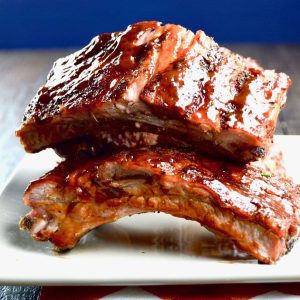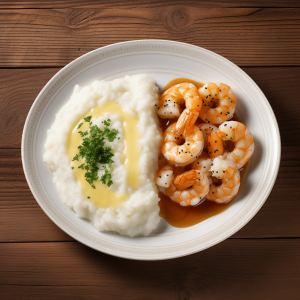
The History of Fried Chicken: A Southern Culinary Journey
Fried chicken. The very phrase conjures images of crispy, golden-brown skin, juicy meat, and a symphony of savory spices. But this iconic dish, so deeply ingrained in American culture, particularly the South, boasts a history far richer and more nuanced than its simple preparation might suggest. It’s a story woven from threads of West African culinary traditions, the crucible of slavery, and the evolving landscape of American gastronomy.
From West Africa to the American South: A Transatlantic Culinary Legacy
The origins of fried chicken aren’t neatly packaged in a single, easily identifiable moment. Instead, its story begins long before its association with the American South. West African cooking techniques, characterized by the use of frying, played a crucial role. Various methods of frying meats and vegetables were commonplace across different West African cultures, utilizing oils like palm oil, giving meats a distinctive flavor and texture.
These techniques and the underlying appreciation for fried foods were brought across the Atlantic by enslaved Africans. The conditions of slavery severely restricted access to ingredients and cooking methods. Yet, ingenuity thrived. Enslaved people adapted and transformed the techniques they knew, utilizing readily available ingredients to create dishes that sustained them and reflected their cultural heritage. Chicken, a relatively common protein source on plantations, became a canvas for culinary innovation.
| Region of Origin | Cooking Method | Key Ingredients |
|---|---|---|
| West Africa | Deep Frying | Palm Oil, Spices |
| American South | Deep Frying | Lard, Butter, Seasoning |
The Evolution of a Southern Staple: From Plantation to Table
While the exact methods and recipes remain shrouded in the mists of time and undocumented history, the process of frying chicken likely evolved gradually. Initially, it was likely a simple method of cooking: a way to prepare chicken in bulk for feeding a large number of people. However, over time, the process became more refined. The addition of spices, herbs, and specialized seasoning blends transformed simple fried chicken into a culinary masterpiece.
The post-Civil War era saw fried chicken move beyond plantation kitchens. It became a staple of Southern cuisine, appearing in cookbooks and gaining popularity in restaurants and homes. Black entrepreneurs played a pivotal role in popularizing fried chicken, establishing successful restaurants and catering businesses, often using their unique family recipes to carve out a niche in the culinary landscape. This economic activity should be acknowledged as a major factor in shaping the modern conception of fried chicken.
The Rise of Fried Chicken: From Regional Dish to National Icon
The 20th century witnessed the remarkable journey of fried chicken from a primarily regional Southern dish to a nationally recognized culinary icon. The development of commercial fast-food chains further cemented its place in American culture, though often these versions were simplified and standardized versions of the original recipes.
Beyond the Bucket: Exploring the Diverse World of Fried Chicken
Today, fried chicken exists in a multitude of forms, each reflecting the unique culinary traditions and regional variations. From Nashville hot chicken’s fiery spice to Korean fried chicken’s double-fried crispiness, the possibilities are endless. Its adaptability has allowed it to transcend its Southern origins, becoming a global culinary phenomenon.
However, it is crucial to acknowledge the complex history and social implications interwoven with this dish. Its evolution is a testament to the resilience, adaptability, and culinary creativity of people throughout history. It’s a story of cultural exchange, adaptation, and entrepreneurial spirit, showcasing the profound impact of culinary traditions on shaping our identity and food culture. Understanding its history enriches our appreciation for this iconic dish and the people who made it what it is today.

Additional Information
The History of Fried Chicken: A Southern Culinary Journey – An Expanded Analysis
While a simple narrative of fried chicken’s history often focuses on its emergence in the American South, a deeper analysis reveals a far more complex and nuanced story, intertwined with social, economic, and culinary evolutions. A comprehensive understanding necessitates moving beyond the simplistic “Southern” label and examining the dish’s multifaceted origins, its cultural significance, and its ongoing evolution.
Beyond the Southern Myth: Tracing Diverse Influences:
The assertion that fried chicken is solely a Southern creation is a vast oversimplification. While the style of fried chicken we associate with the region undeniably developed there, its foundational elements draw from diverse global culinary traditions. The technique of frying protein is ancient, prevalent in numerous cultures. West African culinary traditions, particularly those brought to America via the transatlantic slave trade, are crucial to understanding the development of Southern fried chicken. Methods of preparing fowl using oil or fat were commonplace, and the use of spices and seasonings likely influenced the development of the characteristic flavor profile. However, it’s crucial to avoid romanticizing or essentializing a singular “African” influence; the specific culinary traditions of various West African groups varied considerably. European frying techniques, particularly those involving battering and breading, also played a role. The melding of these disparate influences shaped the final product.
The Role of the Plantation Economy and Beyond:
The plantation system significantly influenced the evolution of fried chicken. The abundance of poultry, often raised on plantations, made it a readily available protein source. The dish’s relative affordability and ease of preparation, especially when considering larger quantities for numerous laborers, contributed to its popularity. However, reducing the narrative solely to plantation cuisine ignores the fact that fried chicken, in various forms, existed outside plantation contexts. Free Black communities and communities beyond the plantation system also developed their own variations of the dish, utilizing locally available ingredients and adapting techniques to their circumstances. This highlights the inherent diversity in the dish’s development, defying simplistic narratives.
The Cultural Significance and Commercialization:
Fried chicken’s cultural impact transcends mere gastronomy. It has become deeply intertwined with representations of Southern identity, often portrayed in both positive and negative stereotypes in media and popular culture. This complex relationship merits critical examination. Furthermore, the commercialization of fried chicken, from mom-and-pop shops to national fast-food chains, presents another layer of complexity. This commercialization has both democratized access to the dish while simultaneously contributing to its homogenization and potential deviation from traditional recipes. Analyzing the marketing strategies employed by different companies could provide valuable insights into the dish’s evolving image and its consumption patterns. For example, a comparative case study of KFC’s global expansion versus smaller, regionally focused fried chicken businesses could shed light on these factors.
Ongoing Evolution and Regional Variations:
It’s crucial to recognize the ongoing evolution of fried chicken. Modern interpretations continue to emerge, incorporating innovative techniques and ingredient combinations. Regional variations persist across the South and beyond, reflecting local preferences and culinary traditions. Further research focusing on specific regional styles (e.g., Nashville hot chicken, Kentucky fried chicken, etc.) could illuminate the diversity within the dish and the factors that contribute to these distinct variations. This might involve analyzing the use of specific spice blends, frying techniques, and breading methods in different regions.
Conclusion:
The history of fried chicken is not a straightforward narrative but a complex tapestry woven from diverse culinary influences, social structures, and economic forces. A deeper investigation reveals a richness far exceeding simplistic explanations. By exploring its multicultural origins, its role within the historical context of the American South, its commercialization, and its ongoing evolution, we can gain a more comprehensive and nuanced understanding of this iconic dish’s place in American culinary history. Future research should continue to deconstruct reductive narratives and explore the multiple voices and experiences contributing to its rich and ongoing legacy.






